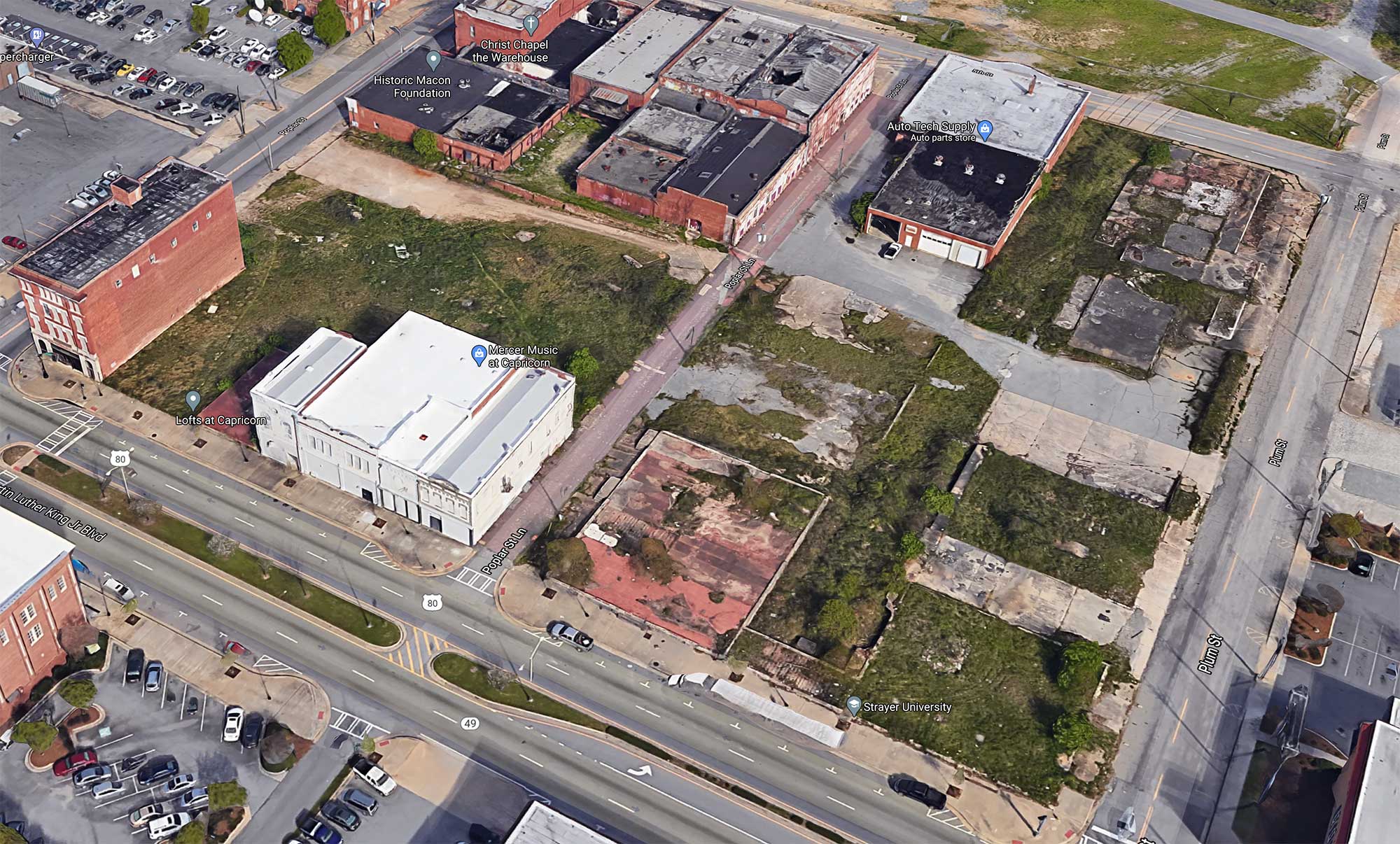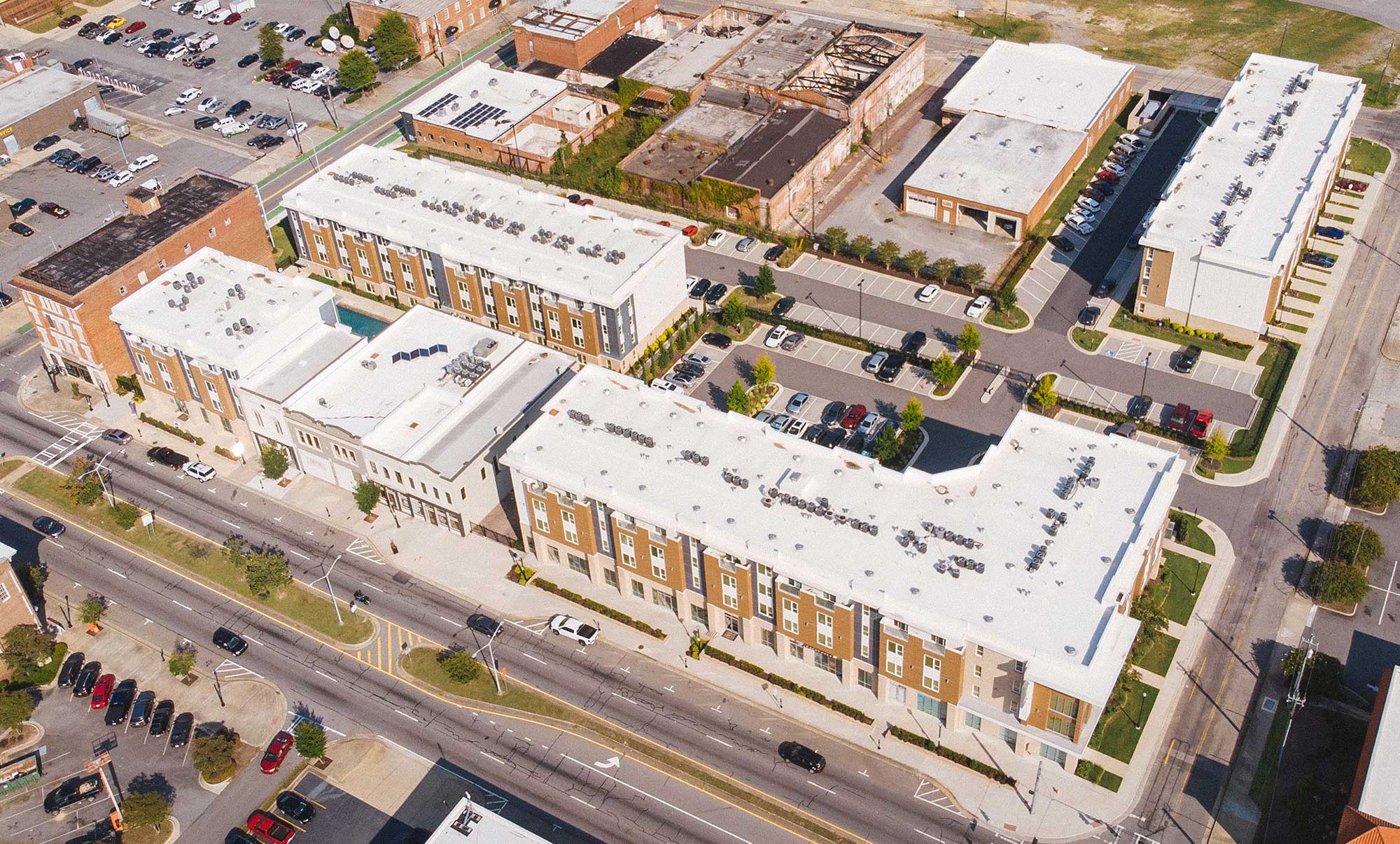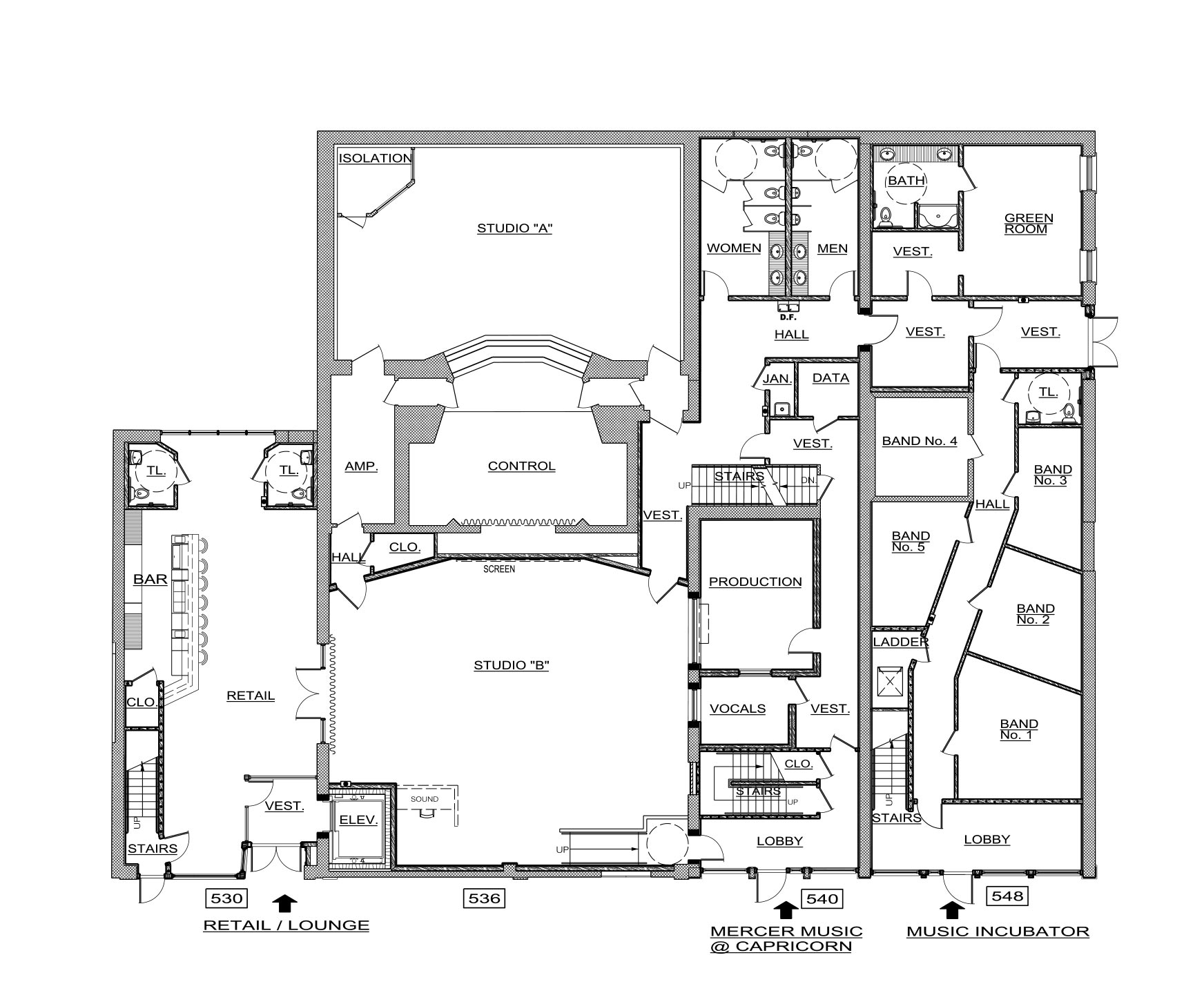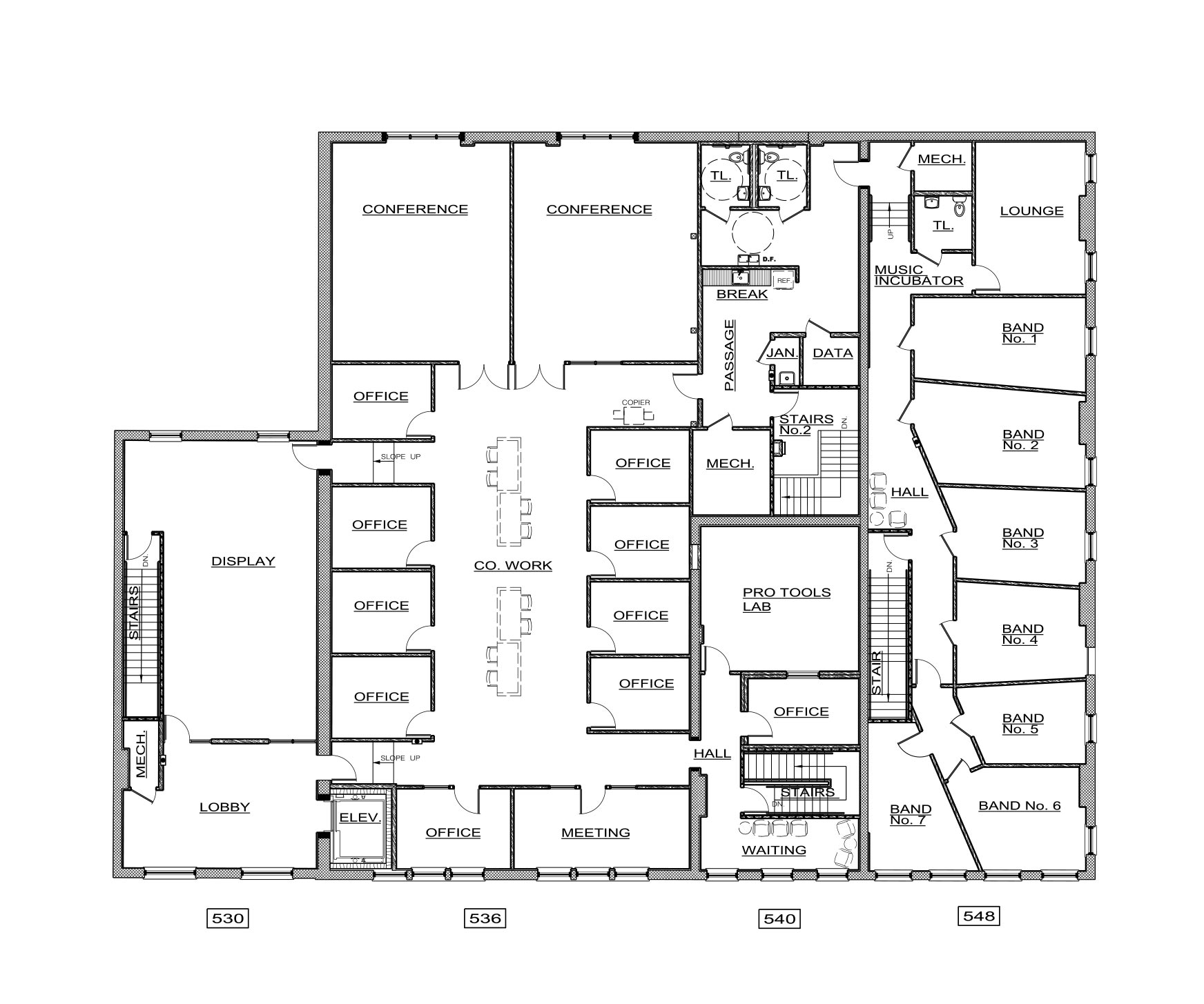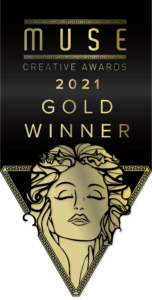About
The nearly 20,000-square-foot complex features four main components:
- Capricorn Music Incubator: Twelve rehearsal rooms over two floors that provide space for musicians to rehearse, collaborate and provide instruction. Rooms are rented at affordable rates by the day, month or year and are accessible 24/7.
- Capricorn Sound Studios: State-of-the-art commercial studios encompassing the historic Studio A where bands such as the Allman Brothers, Marshall Tucker, Charlie Daniels and others recorded in the heyday of Capricorn Records, and a new, larger Studio B that is suitable for larger-scale recording, as well as concerts and special events. The studios are supported by a control room equipped with an analog, 40-channel API 2448 that was custom-built for Capricorn, as well as isolation booths and production suites.
- Capricorn Museum: Through digital, visual and audio storytelling, the interpretive component of Mercer Music at Capricorn informs and engages the Macon community and attracts visitors from around the world. At the heart of the 1,200-square-foot museum is an interactive listening station where visitors can sample the Capricorn Records catalog. The museum also features a retail store where fans can stock up on Capricorn-themed merchandise.
- Offices, Co-Working Space and Meeting Rooms: Eight offices, three conference/seminar rooms and co-working space are available for rent by non-profit arts organizations, music-related businesses and creative professionals.
The Significance of
Capricorn Sound Studios
The story of Capricorn unofficially began when Phil Walden, then a Mercer University student, began booking bands for fraternity parties at area colleges. Walden’s big break came when he discovered a band called Pat Tea Cake and the Mighty Panthers, with Johnny Jenkins on guitar and Otis Redding as vocalist. With Walden’s encouragement, these two headliners formed another band called Johnny Jenkins and the Pinetoppers. As Otis Redding emerged nationally as a solo artist, he and the Walden brothers — Phil and Alan — founded Redwal Music (“Red” for Redding; “Wal” for Walden), one of the first integrated music publishing companies in the South. Redding and Phil Walden also began developing plans for a studio where artists on their roster could record locally. Those plans were put on hold after Redding’s untimely death in a plane crash on his way to a concert in December 1967. After a brief hiatus, Phil Walden launched Capricorn Records in 1969 with guidance from his mentor, Atlantic Records’ Jerry Wexler. Walden selected the name, Capricorn, because it was his and Wexler’s Zodiac sign. Phil Walden, along with Alan Walden, Frank Fenter and others assembled a roster of new rock talent that began to redefine American music and create a new musical genre — Southern Rock.
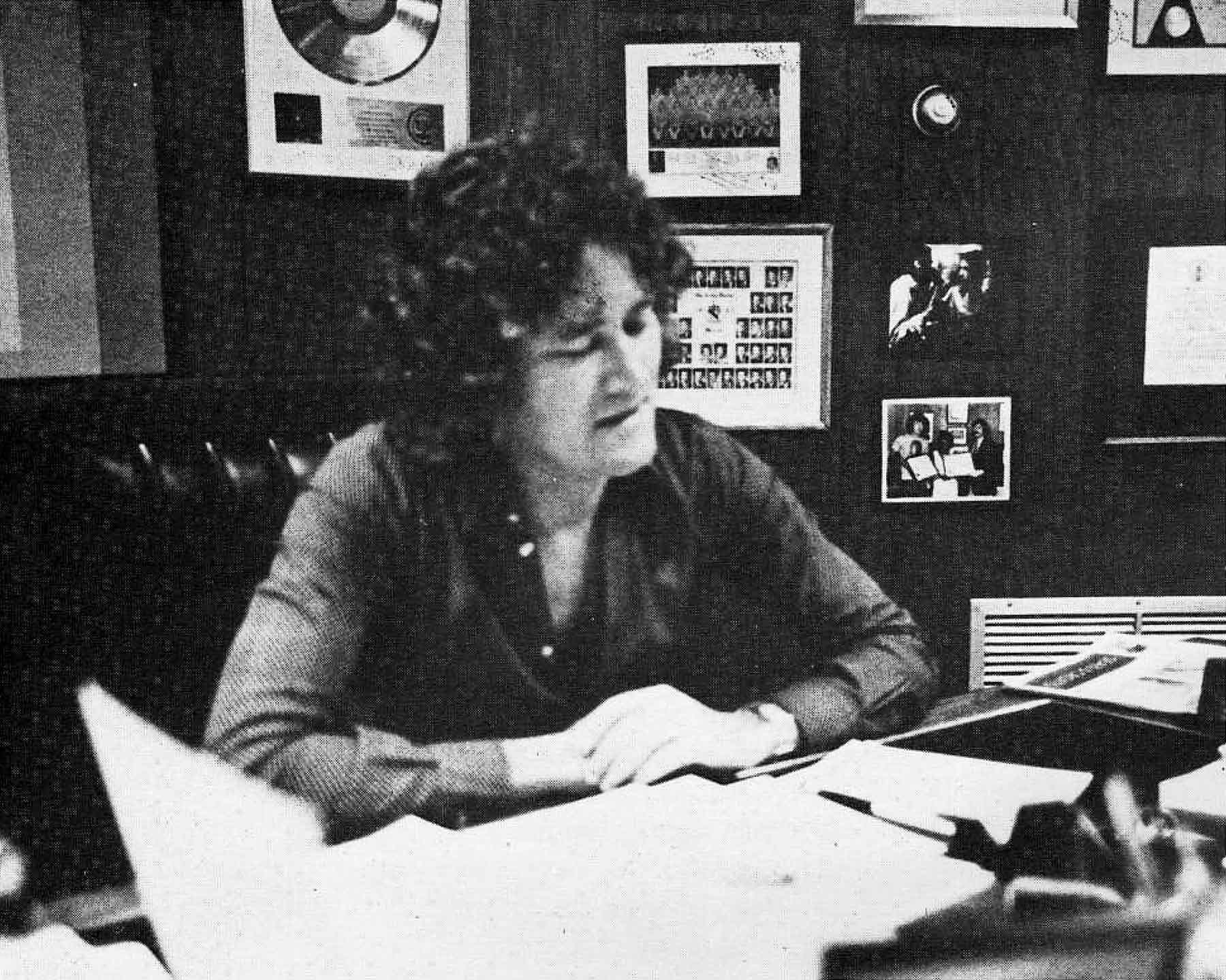

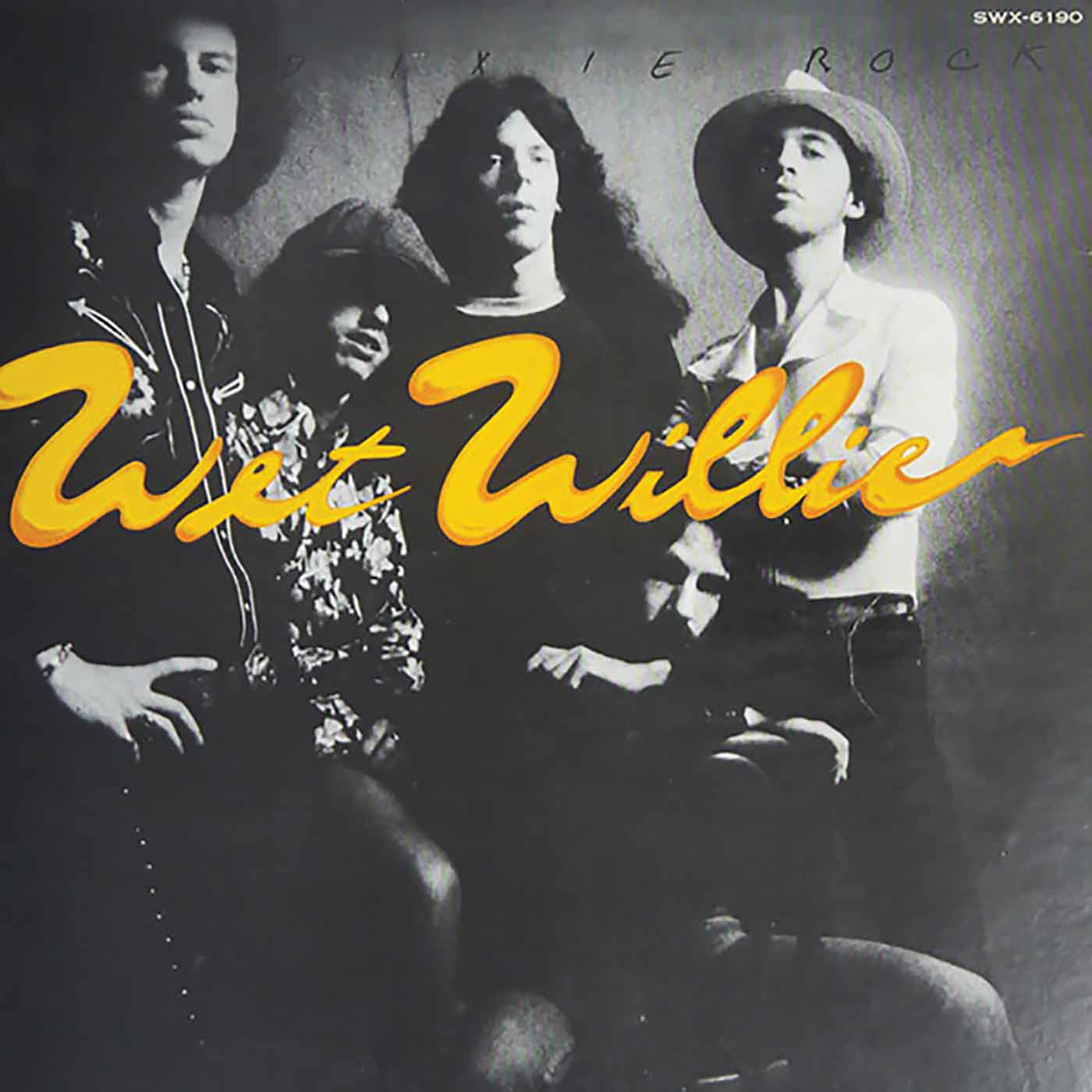
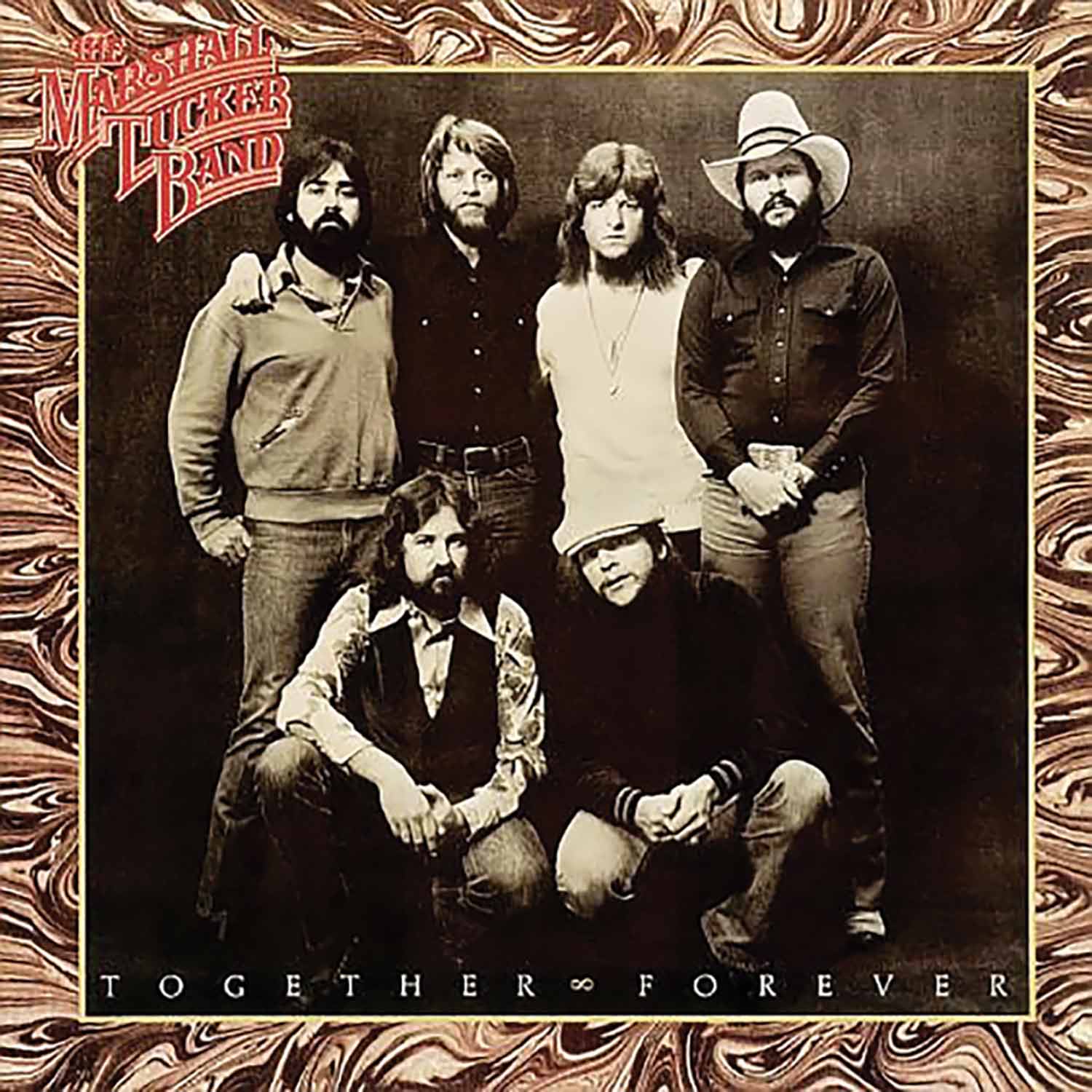

Capricorn Sound Studios is most closely associated with the Allman Brothers Band, which recorded significant portions of three albums here, as well as Gregg Allman’s solo album Laid Back in 1973 and Dickey Betts’s solo album Highway Call in 1974. Led by Duane and his brother Gregg, Southern boys who had grown up in Florida, the Allman Brothers became so huge that even Duane’s death in a 1971 motorcycle accident didn’t derail the band. Their success made Macon ground zero for Southern Rock. Capricorn Records, then operating out of Walden’s office downtown, was the genre’s signature label. As the success of the touring artists rose, the label needed a studio in Macon and found a location in the real estate that Redding and Walden had purchased a few years earlier. By the mid-1970s, the headquarters of Capricorn Records included executive offices on Cotton Avenue and the active recording studio on what is now Martin Luther King Jr. Boulevard. The recording studio is the physical space that captured and defined the 1970s Southern Rock sound with a roster of talented artists who would become legends: the Allman Brothers Band, the Marshall Tucker Band, the Charlie Daniels Band, Wet Willie, Elvin Bishop and many others.
Capricorn is one of only a few studios in the country that can claim to have produced music that had a uniquely transformative impact on American culture. Capricorn is the place where influences from blues, soul, rockabilly and country blended into a new musical genre — Southern Rock — in the 1970s, putting it in a small group of transformative studios and musical styles including RCA Studio A in Nashville where the “Nashville Sound” emerged; Chess Records in Chicago, which popularized “Electric Blues”; FAME in Muscle Shoals, known for its production of “Southern Soul”; Motown Records in Detroit, which created the “Motown Sound” of soul music; Stax in Memphis, where Redding originally recorded; and the “Brill Building Sound,” a continual stream of mainstream pop music from the New York City building.
This juxtaposition of music production and integration of the South in the 1970s contributes to Capricorn’s national significance. The creative spark attracted African-American and white musicians, songwriters and artists who not only worked together but also socialized together, generating shock waves in the South but ultimately influencing a growing acceptance of integration. Capricorn Sound Studios is an important chapter both in the story of Macon and in the broader story of music history. It’s also an important chapter in the story of America because it illustrates how the integration of cultures in America helped strengthen and define our nation.
The Historic Buildings
The four buildings that comprise Mercer Music at Capricorn are excellent examples of two-block commercial buildings that retain a high degree of exterior integrity in their detail. Moving from north to south, the buildings are all built of painted masonry and are referred to as 530, which has one bay; 536, which has two bays; 540, which has one bay; and 548, which has two bays. The 540 and 548 buildings are the oldest, built in 1880. They appear on Macon’s earliest Sanborn fire insurance maps, which list these structures as a jewelry store and the offices of the Southern Express Company, respectively. Sanborn maps indicate this entire parcel was filled with masonry structures in 1884. However, the building in the location of 530 shows up in the 1887 birdseye view of Macon with a cupola, which the current building shows no evidence of. The 1889 Sanborn map shows 530 completed without a cupola, with a fish market on the first floor and a cigar factory on the second floor. Although a similar-width structure existed in 536’s place in the late 19th century, the current building was not built until 1921. The current structure shows up in the 1924 Sanborn map for the first time. According to the 1922 Macon City Directory, it housed the United Leather Company. The 530, 540 and 548 buildings retain their elaborate Victorian decorative details, and 536’s detail clearly references the neighboring structures. When Capricorn Sound Studios opened in 1969, 536 contained the recording studio and an arched opening was added between 530 and 536 for access. A doorway was cut between 536 and 540 for use as offices. Alan Walden later bought from his brother Phil the 548 building, where he operated Hustler’s, an associated company that managed the likes of Lynyrd Skynyrd and the Outlaws. Alan occupied this building well into the 1990s.
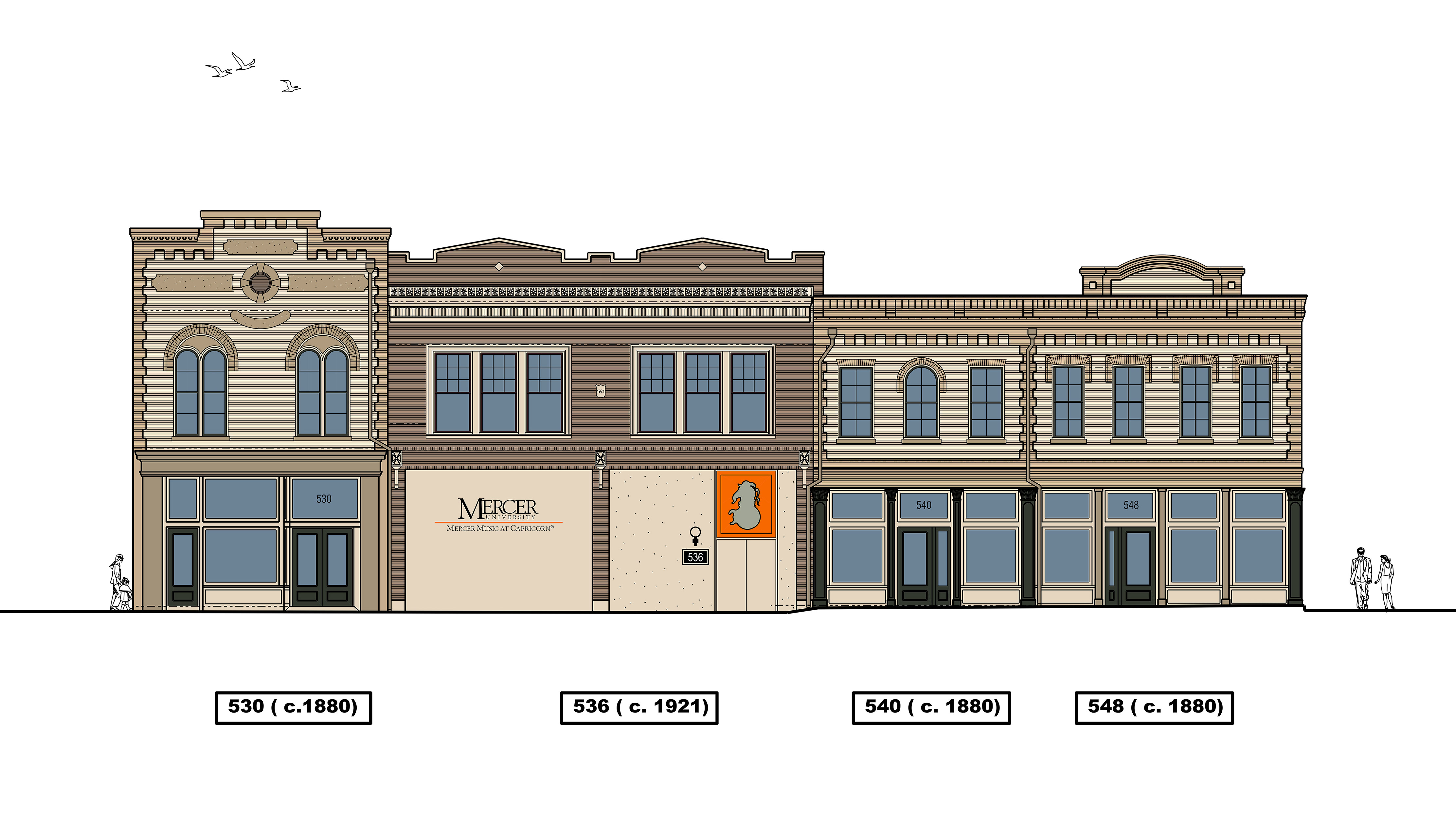
Downtown Impact
Mercer Music at Capricorn anchors the largest market-rate development in the history of downtown Macon. Totaling more than 150,000 square feet, The Lofts at Capricorn includes 82 one-bedroom apartments and 55 two-bedroom lofts. The four-story complex, which was completed in early 2018, has a 4,000-square-foot leasing office and clubhouse, an outdoor pool, 189 parking spaces and 13 units with private attached garages, as well as street-level retail space. The project followed best practices of mixed-use design to keep the streets and sidewalks of downtown alive.
Within a two-mile radius of Mercer Music at Capricorn are important cultural sites that relate to Macon’s music heritage:
- The Tubman Museum, one of the largest museums in the nation dedicated to educating people about the art, history and culture of African-Americans, is two blocks away and is planning a major new exhibit on Macon’s R&B heritage.
- The Douglass Theatre, opened in the early 20th century as the premier movie theatre and vaudeville hall open to African-American citizens in the city, is three blocks away. Musical stars such as Cab Calloway, Duke Ellington, Otis Redding and James Brown performed at The Douglass during its heyday.
- The Grand Opera House, operated by Mercer University, hosted numerous concerts by Capricorn artists, including the Allman Brothers Band and Marshall Tucker Band. It also was a favorite venue of Gregg Allman, who recorded the DVD “Gregg Allman: Back to Macon, Georgia” at the historic theatre in 2014, and performed annual sold-out concerts there until 2016.
- Grant’s Lounge, the original home of Southern Rock, is three blocks from Capricorn and in the 1970s hosted all the Capricorn recording artists for jam sessions. It still serves as a live music venue for legends and up-and-coming artists.
- The Otis Redding Foundation’s offices, which include a mini-museum displaying Otis Redding memorabilia and artifacts that cannot be found anywhere else, is six blocks away.
- The Allman Brothers Museum at the Big House is two miles away and features an extensive collection of memorabilia and artifacts related to the band.
- Rose Hill Cemetery, where Duane Allman, Gregg Allman, Berry Oakley Jr. and Butch Trucks are interred and where the band found inspiration for several of its songs, is less than two miles away.
